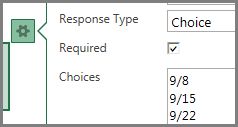Understanding Online Surveys: A Comprehensive Guide
Online surveys have become an integral part of data collection and research in various fields. They offer a convenient and efficient way to gather information from a large and diverse audience. In this article, we will delve into the intricacies of online surveys, exploring their benefits, challenges, and best practices.
What Are Online Surveys?

Online surveys are questionnaires conducted over the internet, allowing researchers to collect data from respondents in real-time. These surveys can be distributed through various platforms, including email, social media, and dedicated survey websites. They are widely used in market research, social sciences, and business to gather insights and opinions from a broad range of individuals.
Benefits of Online Surveys

One of the primary advantages of online surveys is their cost-effectiveness. Traditional surveys require printing, mailing, and manual data entry, which can be expensive and time-consuming. Online surveys eliminate these costs, making them a more affordable option for researchers. Additionally, online surveys offer several other benefits:
-
Increased reach: Online surveys can reach a wider audience, including individuals from different geographical locations and demographics.
-
Real-time data collection: Researchers can collect data in real-time, allowing for immediate analysis and decision-making.
-
Easy data management: Online survey platforms provide tools for data analysis, storage, and sharing, making it easier for researchers to manage and interpret the data.
-
Customization: Online surveys can be easily customized to fit specific research needs, allowing researchers to ask targeted questions and collect relevant data.
Challenges of Online Surveys

While online surveys offer numerous benefits, they also come with their own set of challenges:
-
Low response rates: Online surveys may face low response rates, making it difficult to achieve a representative sample.
-
Survey fatigue: Respondents may become bored or overwhelmed by lengthy surveys, leading to incomplete or inaccurate responses.
-
Survey bias: Online surveys may be subject to survey bias, as certain groups may be more likely to participate than others.
-
Security concerns: Online surveys must ensure the security and privacy of respondents’ data.
Best Practices for Online Surveys
To overcome the challenges of online surveys and maximize their effectiveness, researchers should follow these best practices:
-
Design clear and concise questions: Ensure that the questions are easy to understand and relevant to the research objectives.
-
Keep the survey short and focused: Avoid lengthy surveys that may lead to survey fatigue.
-
Use incentives: Offering incentives can increase response rates and encourage participants to complete the survey.
-
Test the survey: Before distributing the survey, test it to ensure that it works correctly and that the questions are clear.
-
Monitor and analyze the data: Use survey platforms that provide tools for data analysis and monitoring to ensure the quality of the data.
Types of Online Surveys
Online surveys come in various formats, each suited to different research needs:
-
Self-administered surveys: Respondents complete the survey on their own, without assistance from the researcher.
-
Interview-based surveys: Respondents are interviewed by a researcher, either in person or over the phone.
-
Panel-based surveys: Respondents are selected from a pre-existing panel of participants, ensuring a representative sample.
-
Mobile surveys: Surveys designed specifically for mobile devices, allowing researchers to reach a broader audience.
Conclusion
Online surveys are a valuable tool for data collection and research. By understanding their benefits, challenges, and best practices, researchers can design and conduct effective online surveys that yield valuable insights. As technology continues to evolve, online surveys will likely become an even more important part of the research landscape.
| Survey Type | Description |
|---|---|
| Self-administered surveys | Respondents complete the |



